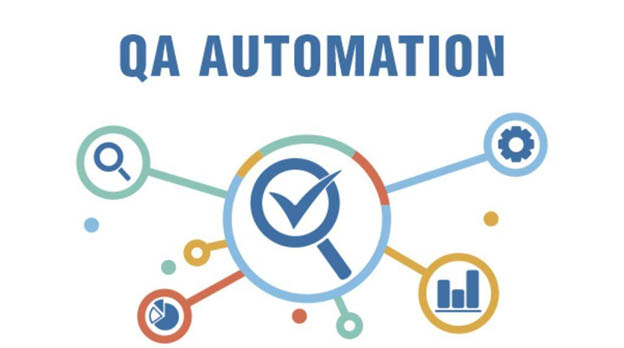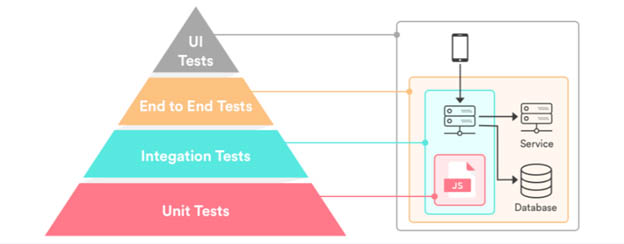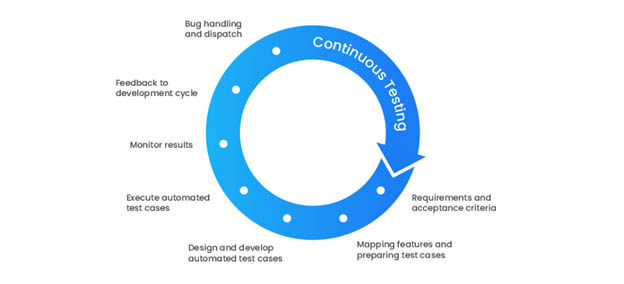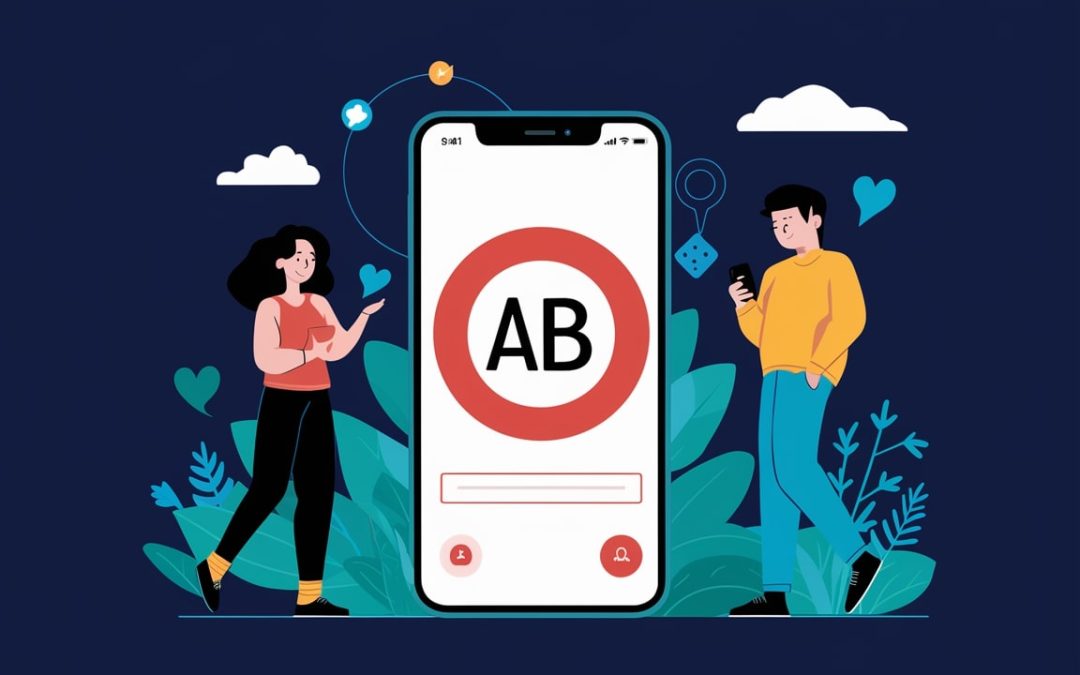The relentless pace of software delivery is making test automation essential.
As developers implement continuous integration and deployment, manual testing struggles to keep up.
Forward-thinking QA teams are ramping up intelligent test automation to match higher release velocity.
Let us dive into predictions on the future of smarter, expanded, and optimized QA automation.
Learn how increased adoption of automated testing, tighter integration with development pipelines, and leveraging AI will transform software quality and release confidence.

Image source – https://leadgenapp.io/
Discover leading trends and expert insights to level up your test automation.
More Teams Adopting Test Automation
There is wide agreement among QA leaders that more teams will use test automation.
According to Gartner research, test automation use has tripled in the last 5 years. This growth will likely continue as teams want to automate repetitive testing tasks.
Automating tests saves time compared to manual testing. It lets teams keep up with faster software releases.
Across various surveys, 80-90% of QA professionals report using some level of test automation today.
Allan Hansen, Director of Quality Engineering at GitLab, believes at least 30-50% of all test cases should be automated.
The ideal balance depends on the app’s complexity, deployment frequency, and the skills of the QA team.
Most teams are working to ramp up both API test automation and UI automation across the entire development lifecycle.
Integration with DevOps Pipelines
As DevOps practices spread, QA automation Testing Services are becoming tightly integrated into continuous integration/continuous delivery (CI/CD) pipelines.
Running tests earlier in the development cycle provides faster feedback to developers.
There is a major shift towards ‘shift left’ testing, triggering automated tests as early as possible in the DevOps workflow,” explains Hansen.
“Automated tests will run on every code commit and pull request to surface any defects immediately.”
Test automation also facilitates progressive delivery by gating releases through automated quality gates.
According to Gartner, 45% of teams now implement automated approval checkpoints before launching new features.
Continuous testing further enables performance engineering to shift left.
By testing the non-functional aspects of an application earlier, teams can catch performance regressions during development.
Smarter Test Generation with AI
AI and machine learning are applied to improve test automation coverage and maintenance.
Test generators can now create their test cases based on models trained on past test suites, defect data, logs, and documentation.
“AI test generation will gain significant adoption over the next 5 years,” predicts Murphy.
“By algorithmically deriving test cases instead of manually scripting each one, testers can expand coverage faster.”
For example, Tricentis AI-based test generator Tosca continuously observes app usage and regressions to recommend high-value test cases.
Tools use visual AI to learn expected results and identify visual bugs. AI also has potential to make tests more resilient to changes.
While AI-generated tests lack human contextual understanding, the benefits outweigh this limitation for basic test cases. Testers then have more time to work on complex scenarios.
“AI will significantly automate mundane test creation and upkeep activities,” says Underwood. “But humans still need to manage test data, infrastructure, and higher level validation.”
Expanded Roles for QA Professionals
As routine test execution shifts to automation, QA Automation Testing Services roles will focus more on high-value activities. Testers will spend less time on rote scripting and maintenance.
Instead, they will manage and optimize automation frameworks, analyze test results, perform exploratory testing, and collaborate with other teams.
“The tester role will evolve from ‘executor’ to ‘automation engineer’,” explains Hansen.
“Testers will design automation strategies, develop frameworks, and debug pipelines – work that requires engineering expertise.”
Indeed, 72% of test automation users report challenges in hiring candidates with sufficient technical skills.
Demand for test automation engineers and SDETs (software developer engineers in test) will likely outpace traditional QA roles.
At the same time, soft skills become even more crucial. “Testers will need a dual mindset – technical yet end-user focused,” says Knight. “Communication, collaboration, and product thinking will be differentiators.”
Test teams may also merge into unified quality engineering groups.
With DevOps adoption, responsibilities around performance, security, reliability, and release management blend.
Challenges with Test Maintenance & Framework Evolution
However, broader test automation adoption surfaces maintenance and framework challenges.
More tests lead to more failures to investigate and fix. Fragile tests break with each code change and require regular upkeep.
“The top struggle is dealing with test maintenance costs at scale,” says Hansen.
“Teams easily get stuck chasing test fixes and unblocks rather than maximizing test coverage.”
Best practices like adding wait commands, separating tests from underlying objects, and implementing page object models improve resiliency.
However creative solutions are needed to manage mass test suites.
For example, dimensional test design by Rows allows tests to reference features without being coupled to them.
Frameworks and tooling must also evolve alongside applications.
Major version upgrades can “reset” test automation to square one. New plugins, languages, and devices may require revamping approaches.
Striking the Right Balance
Despite the promise of AI and test automation, experts emphasize that human insight remains irreplaceable.
The art of testing – exploration, context, and intuition – cannot be replicated. Complex user journeys, edge cases, and new features require manual verification.
“Automated testing is an amplifier, not a replacement for smart testers,” says Knight. “You still need human ingenuity applied to the problem.”
By leveraging automation for stability while enabling human creativity, test teams can maximize software quality and confidence.
The Rise of Low-Code Test Automation Tools

Image Source – https://www.testevolve.com/
Low-code test automation tools are gaining traction as an easier way for non-developers to implement automation.
These tools utilize intuitive visual interfaces or English-like languages to abstract away complex programming concepts.
“Low-code test automation democratizes test automation by enabling non-technical users to participate,” says April Underwood of Slack.
“These tools lower the barriers to entry so anyone can automate tests.”
For example, tools like Tricentis Tosca and Testim provide drag-and-drop interfaces to create test steps and assertions without coding.
Katalon Studio, Cypress, and TestCraft allow users to write test scripts in simplified English. Other tools record user actions to generate automated scripts.
Low-code options trade off some customization flexibility for ease of use.
However, they provide 80% test coverage with 20% effort compared to traditional code-based automation. Less technical team members can handle test maintenance.
However, low-code tools still have limitations.
Testers may eventually hit walls requiring underlying coding expertise. For complex scenarios, custom scripting provides more control and stability.
The future direction is “low-code first, not low-code only,” says April Underwood. Teams can start with visual tools and graduate to scripting for advanced scenarios.
Low-code and pro-code will co-exist based on project needs. However, lowered barriers will expand automation to more roles and organizations.
Automating Visual Testing
Another growth area is automating visual UI testing. Traditional Web and mobile app testing focuses on functional validation.
But customers equally care about the visual appearance. Visual bugs – layout issues, formatting, contrast problems – impact brand quality but are easy to miss.
“Visual testing is the next frontier for test automation,” says Thomas Murphy of Uber. “Automated visual validation will become integral to CI pipelines.”
Powerful algorithms can now automatically detect visual regressions.
For example, Applitools and Percy capture screenshots and compare them against known baselines to flag layout differences.
Other tools like Ghost Inspector and Chromatic analyze for accessibility and style violations.
Visual testing generates massive amounts of screenshot data. Cloud storage and smart diffs optimize comparisons to surface meaningful changes.
AI trains models on valid app states for more robust analysis.
“The future is visual AI that mimics human visual perception to assess quality,” explains April Underwood of Slack.
This allows scaling visual validation across browsers, devices, and resolutions.
However, visual testing has unique maintenance needs.
Tests can fail for benign UI tweaks. Flaky image captures require rebaselining and retraining models. Testers spend significant time reviewing false positives.
Simon Knight advises starting visual testing with critical journey coverage, not entire flows.
Teams should also integrate alerts to focus reviewers on true bugs. Balancing automation and human effort remains key.
Testing Microservices & Distributed Systems

Image Source – https://www.simform.com/
Microservices and distributed architectures present new challenges for end-to-end test automation.
Traditional testing tools assumed monolithic apps. However modern apps have many independently deployed components with complex interdependencies.
Key differences include dynamic IP addressing, transient test environments, and partial deployments during development.
External service integrations – APIs, databases, message queues – multiply the moving parts.
Holistic test orchestration platforms have emerged to meet these needs.
For example, TestContainers spins up required services defined in Docker Compose for each test run.
Other tools like Gauge, Repeater, and RESTfly manage test workflows across components.
Teams also adopt service virtualization to simulate interconnected systems. Stubs imitate APIs and message queues. Service mesh proxies like Hoverfly capture network traffic for mocking.
However, debugging test failures across microservices poses challenges. Tracing distributed request flows is tricky.
Service meshes and test orchestration help create holistic test environments across components.
However, debugging across microservices remains complex. Architecting atomic contract tests and logging helps isolate where issues occur.
Going forward, testing tools must evolve to address distributed systems.
Componentization requires approaches that bridge services yet test them independently.
Automation design should assume services can fail or change without breaking end-to-end test suites.
With microservices adoption accelerating, solving these problems will be key.
Expanding Test Coverage Earlier
A clear trend is expanding test coverage earlier across more environments.
Rather than waiting for full integration, teams shift testing left to get feedback faster. Automating these checks is crucial for rapid iterations.
At the code level, unit and component tests execute on every commit. Integration and contract testing span services as they’re stitched together.
Broad regression testing starts once core flows are assembled. Exploratory and user acceptance testing ensures everything works for users.
Test automation also spreads to more environments from dev, staging, and production. Running automated checks earlier surfaces bugs quicker when cheaper to fix.
However, earlier testing requires loosely coupled architectures.
Tightly integrated apps prevent isolating components. Teams also need disciplined test hygiene and maintenance to scale automation.
“The challenges with expansive test automation are managing flakiness and focusing CI/CD resources on critical tests,” Allan Hansen of GitLab explains.
Alerting, test impact analysis, and AI-generated prioritization help optimize suites.
Ultimately, code will ideally have automated tests at each level continuously run against all environments.
While scaling this automation is demanding, the benefits are faster feedback, quicker releases, and higher quality.
Continuous Test Optimization

Image Source – https://www.pcloudy.com/
Maintaining stable and effective test automation at scale is complex, leading to new practices around continuous optimization.
The goal is to maximize coverage while minimizing maintenance overhead.
“The future of automation is continuously improving and refining tests to provide maximum value,” says April Underwood of Slack.
Techniques like test impact analysis inform whether to update, retire, or refactor tests based on code changes.
Analytics identifies unused and flaky tests to delete. Test generators continuously synthesize new valuable cases.
Prioritization and scheduling optimize what runs when across environments given limited CI/CD resources.
Tests are sequenced based on breadth, criticality, and stability. Parallelization splits suites across machines.
“Continuous test optimization will make automation smarter and more efficient,” says Thomas Murphy.
Teams will leverage AI and analytics to focus on automation where it provides the greatest confidence.
However, optimizing automation requires cultural changes. Refactoring automation is often deferred given time pressures.
Legacy tests accumulate without cleanup. Processes must enable continuous improvement initiatives across the test lifecycle.
Optimization also needs extensive instrumentation and data.
As analytics-driven decisions expand, capturing test metrics and linking results to code changes will be essential. By iteratively curating automation, test suites provide maximum coverage and signal.
The future of test automation promises exciting advances through smarter tools, expanded scope, and continuous optimization.
While automation introduces complex engineering challenges, the benefits for release velocity and quality are immense.
Teams able to leverage automation across the lifecycle while preserving human creativity will lead the way.
The next five years will see test automation become integral across roles, environments, and activities.
Automation breadth and sophistication will drive a new era of rapid, reliable delivery.
However, thoughtfully incorporating human insight remains essential to maximize business value.
By combining automated stability with exploratory testing, teams can release high-quality digital experiences at unprecedented speeds.
What questions do you have about the future of test automation? Let us know in the comments below!





